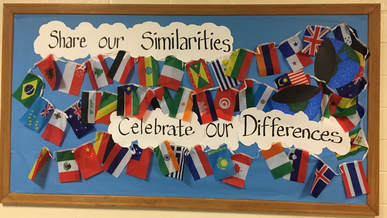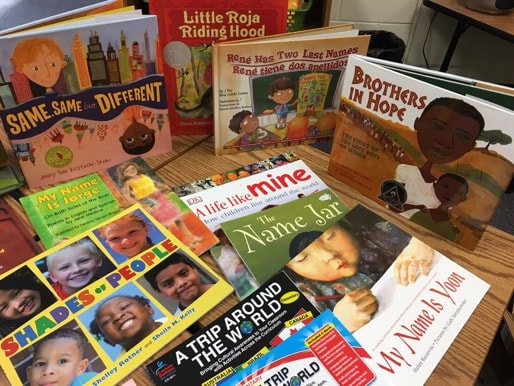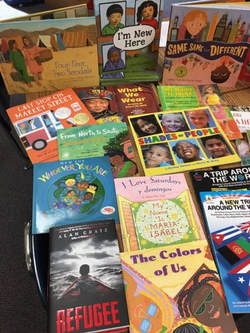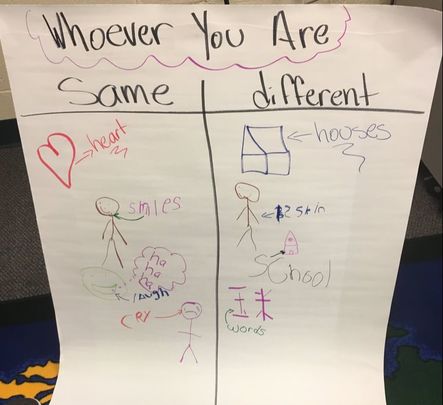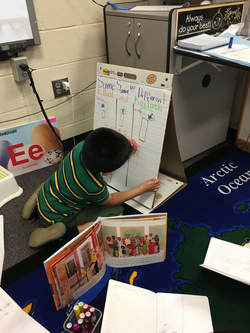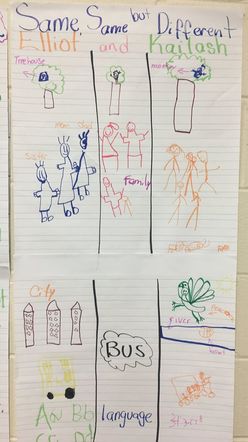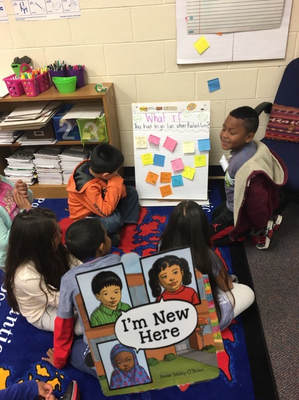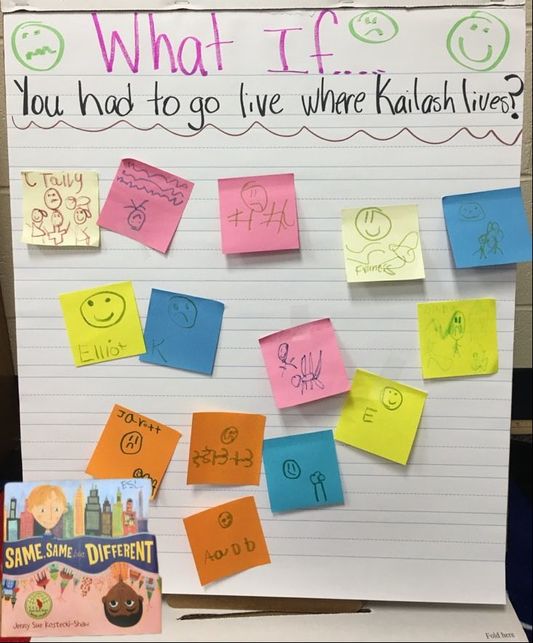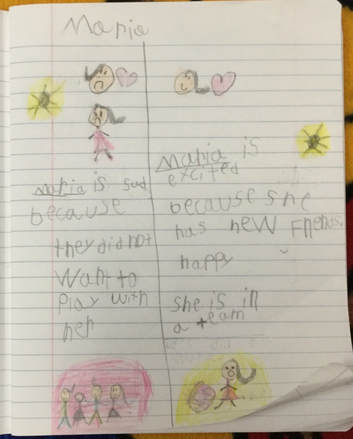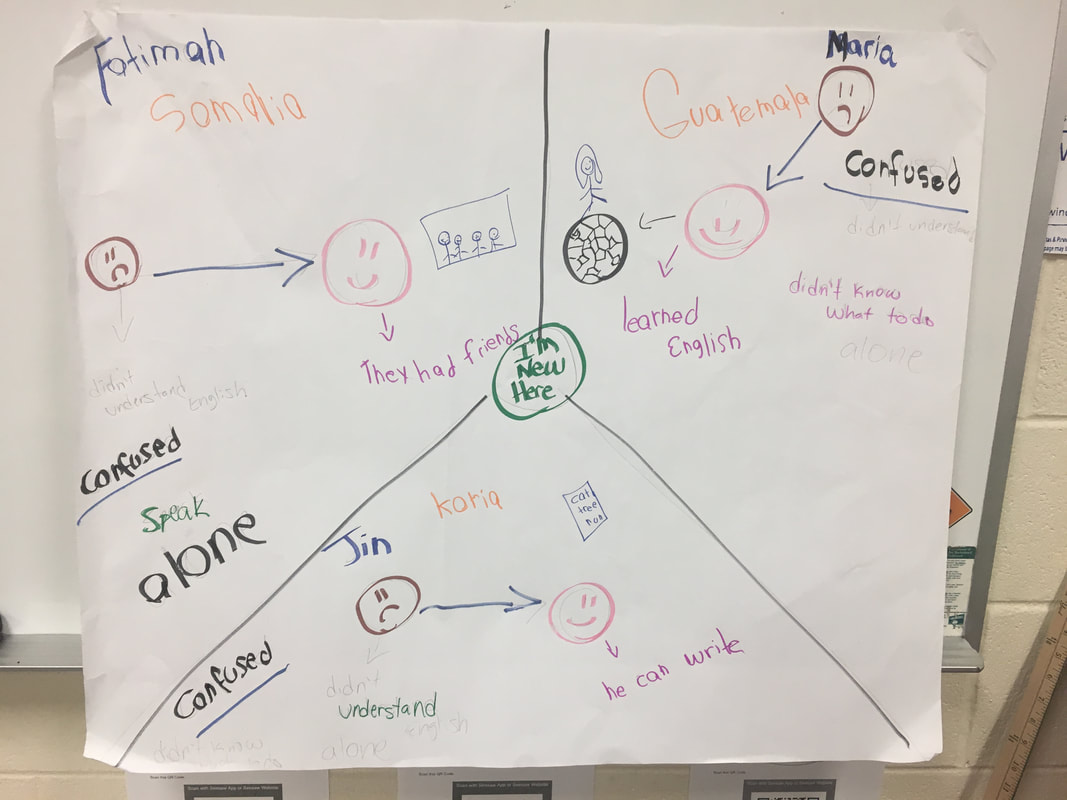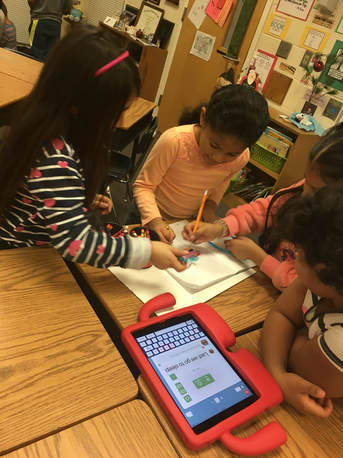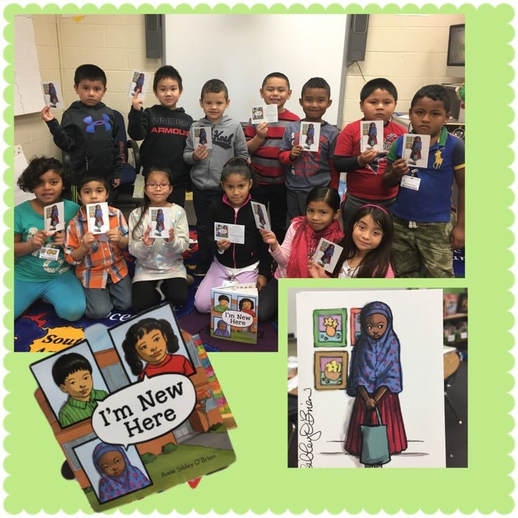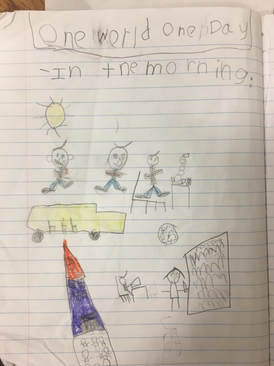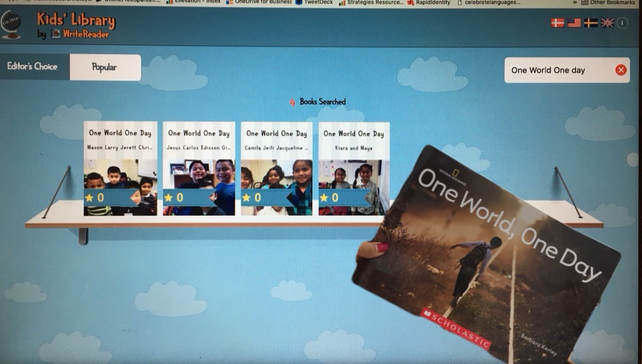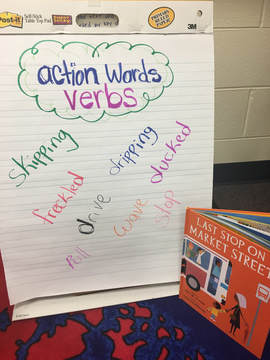"All the reading she has done had given her a view of life they had never seen." ~ Roald Dahl, Matilda
During the summer of 2017, I had the opportunity to travel to Germany with Go Global NC. I had an unforgettable experience! The biggest impact I had during this experience was the cultural differences and similarities I experienced in 10 days. Culture shock is not new to me! I came to the USA at the age of 15 and experienced as much culture shock as you can imagine. However, the sad thing was that I felt like as a newcomer student, I was somehow forced to put aside my own culture, beliefs, and values, in order to acculturate to the USA. Once I started school I stop reading and learning in Spanish; and I never had the opportunity to share my values and my Guatemalan culture with teachers and peers. I had the thought that my culture was not worth talking or reading about.
While visiting Germany's schools, I noticed as much diversity as we see in USA schools today. What shocked me, however, was how comfortable diverse students were sharing own culture and speaking their home language. Students would have book talks and you can hear 3-4 different language spoken at one time. Wow! What an eye-opening moment for me! I loved how students embrace who they are and how they value knowing and speaking different languages!! So I decided to take action. I want my English learners to not fall into the trap replacing culture while acculturating in the USA. Just because they are learning the language and living the USA doesn't mean they need to completely forget their roots and who they are. They need to know that their culture, language, and family beliefs are valued and matter. So I wrote two grants and both were funded:
Lessons
The following lessons can be for elementary grades K-5 and adjusted/extended as needed.
After reading the book out loud, students turned and shared with partners all the details the author mentions about similarities and differences. I had students create a T-chart with illustrations and labels as an anchor to share what we've learned. I could've created this chart myself, however, I believe in student empowerment...and having student created charts are just epic!
We used this chart as we introduced the next book. Connections are very important when introducing a new book or topic. This chart helped us predict and have discussions about the characters in our next book: Same, Same but Different.
These conversations that students were having was perfect since it prepared them to compare the two characters which are exactly what this book is about. The book is about Elliot who lives in America and Kailash who lives in India. They are pen pals who write to each other sharing their differences and similarities. After reading the book out loud, students turned and shared with partners all the wonderful things that the two characters have in common as well as their differences. At this point, students had so much language that they could've to continue sharing all morning long. Students also created a T-chart comparing the two characters:
As students were creating this chart, I asked to begin thinking about themselves and to come up with some things they had in common with one or both of the characters.
They were also asked to appreciate differences they had with one of the characters and share that as well.
If there is a book you must have as part of your classroom library, it should be I'm New Here. This book highlights exactly what students go through as newcomers in USA classrooms. In this book, you'll learn the struggles, the confusions, and the feelings that our language learners experience as they begin to acculturate in USA schools. However, what I love the most about this book, is the fact that it teaches us to highlight students' strengths and create a comfortable environment where students show their abilities. Maria, Jin, and Fatimah teach us a valuable lesson for all to learn...not just students...but educators as well.
Before we started reading I'm New Here, we discussed what it would be like to leave the USA and moved to India where Kailash lives and why? This image shows my first graders' responses using illustrations. This chart ignited a great discussion as we have already learned all about Kailash and his way of living. This was a great activity to activate background knowledge and make text to text connection. It was a great way to introduce our new book and begin predicting how the characters in our new story might feel because they had to leave their home countries to come to the USA.
Another great activity we did before we started our book was learning where our characters were from. We pulled out our world map and circled the three countries our characters were from. This is a great opportunity for students to learn a little more about different cultures. An extension to this map activity would be to learn all about: Guatemala, Korea, and Somalia. It is always a great idea to read the book aloud the first time without any interruptions. This is a strategy that teaches students to carefully pay attention to the story from beginning to end. After hearing the story, students turn and share with a partner all and everything they want to share the text. From character information to details - no specifics - just TALK about the text! For the second reading, students were told to pay very close attention to character change at feelings. They are told to observe how characters feel in the beginning of the story, in the middle, and how they feel once the story ends. Though this book is excellent to teach story sequencing, my focus was on understanding the character using the details found in the text. Students also had a written response assignment. They chose one of the characters and explained how he/she felt in the beginning of the story and compared to their feeling at the end of the story.
I was amazed how empathetic my students felt about each character. They were able to explain why students felt the way they felt and what made them change the way they each felt.
As students were sharing their individual written response, we created a classroom chart with all the details we learned about each character. I divided our chart paper into three parts to help students visualize the information need for each character.
While we were creating our chart I can tell some students were more into one character than others. I believe it was because they identified with the character's abilities or perhaps they felt a connection with the character's background and language.
This led us to begin analyzing the character of our choice. We cut our chart along the lines and made 3 groups. Students grouped according to their favorite character. The objective was to discuss all the details learned about their character and write a personal story about him/her using transitioning words - First, Next, Then, Last and to include details from the text as to how the character's feelings changed throughout the story and why. It was amazing how students engaged in this assignment and how enthusiastic they were to write all about the character of their choice.
If you want to read our students' books, follow this link and search the character of your choice: Maria/Jin/Fatimah. You won't be disappointed with their fantastic work!
The fascinating thing about this book is the ability to serve as a mirror for our students since they can identify with what the kids are doing; but also, as a window to expose our students the way of life in other parts of the world. We read the book the first time just to enjoy the rich text and the illustrations. But the second time, I had my students to think as they were listening, how they could make personal connections with the text. We also discussed analyzing the text structure - (sequencing of the story). After reading the book students turned and shared with a partner the connections they made with the actions that students perform in other parts of the world. Students also discussed the differences they observed comparing to their personal daily life. As a written response students were asked to illustrate or write what they do every day in the morning - at school - after school - and in the evening. This prompt follows the sequence students heard from the text.
Students shared with one another and grouped themselves according to similarities in what they do every day. So this gave me the idea to have them publish another book about what they do in a day!
If you want to read our students' books, follow this link and search One World One Day.
You won't be disappointed with their fantastic work!
I have shared our students' stories using my class twitter and facebook account and it is amazing the response we are getting. My students are so excited to learn more and write more! These are just some of the feedback we are getting and has empowered my students in so many ways:
Stay tuned for our next book... The Last Stop in Market Street by Matt de la Peña
Thank you for reading!
2 Comments
Dora
1/13/2018 10:49:27 am
Love this post and these books! We need more of the this especially now. Thank you!
Reply
Emily Francis
1/14/2018 03:03:56 pm
Thank you so much, Dora for taking your time to read my post! I hope you found these lessons and books interesting. Please share if you decide to share these books with your students.
Reply
Your comment will be posted after it is approved.
Leave a Reply. |
Categories
All
Archives
May 2024
|
